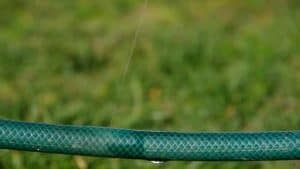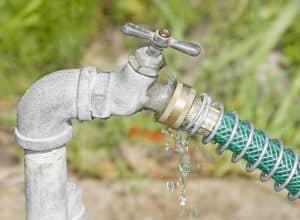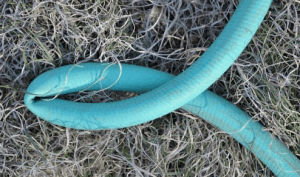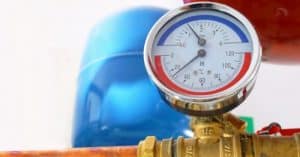How To Get The Most Water Out Of Garden Hose
Low pressure in a garden hose can make watering lawn and garden areas very time-consuming and intimidating. Improving water pressure in your garden hose makes watering chores easier. It also allows the water to reach further thus allowing effective watering. Consequently, your gardening life becomes better and funnier.
Luckily, increasing water pressure in a garden hose is usually simple. As you'll discover, low-pressure issues usually come from the hose itself. Also, the problem could be with the spigot or even the home water pressure. This article will give you detailed instructions on how to increase water pressure in your garden hose depending on where the underlying problem is.
Where to Start?
This is probably the very first question that pops up when the thought of increasing water pressure in garden hose comes knocking. Well, start by checking and fixing any problems with your hose. Here is how you do it:

1. Look for any leaks
Sadly, leaks are the most common causes of low pressure in a garden hose. To examine for any leaks on your hose, start by laying it flat on the ground. Turn on the water and move along the hose to check if any water is escaping from any points. You might need to bring your eyes down to the ground to be able to detect these leaks as they can be very small. If you come across any leak, repair it using a rubber patching kit.
2. Check whether the garden hose is correctly linked to the spigot and nozzle
If your hose is not fully-connected, this can cause a drop in hose water pressure. Once you sight any leaks, fasten the connection to fix the issue. If there are other connections that your garden hose is linked to, e.g. a splitter, ensure they are secure.

3. Ensure the hose is not kinked/ twisted
You can easily detect this if you were in the process of watering your garden or lawn and then the water pressure drops. The drop in water pressure in garden hose means the hose could have kinked. Walk along the hose and look for any twisted points. Straighten the hose and you'll be good to go. In case your hose is rolled up on a garden hose reel, check it as well and fix the twist up.

4. Ensure there is no dirt and blockages in your garden hose
Dirt inside the hose is another major cause of low water in pressure in a garden hose. To remove the dirt, you need to clean it using either bleach or vinegar. We recommend that you carrying out garden hose cleaning at least once per year especially at the onset of spring.
If there are no issues on your hose, it could be that your pressure from the water main is very low. In such a case, here is how you proceed with increasing water pressure in garden hose.
5. Check the pressure at your main supply
Identify the main water supply for your home and turn off faucets and any other water consuming appliances in your home. Connect a ¾ water pressure gauge onto the nozzle of the main water supply and twist the nozzle counterclockwise. If the main water supply doesn't have a nozzle, attach the pressure gauge on the nearest faucet.

Take the readings of the pressure gauge. Ideal water pressure ranges anywhere between 45 and 55 psi. Normal pressure is 40-60 psi. Anything around 70 psi will likely damage your gardening appliances. If the water pressure gauge registers anything below ideal (45) psi, it means your home water supply could be the main cause of low pressure in your garden hose. Low and normal water pressure can be improved as follows:
-
Increasing low home water pressure
This is an important thing to do if you find out that your home water pressure is below 45 psi. On the main water supply, you'll find a water pressure regulator. This is the one that normally control the water flow into your home.

Using a wrench, turn the water pressure regulator's bolt clockwise to increase the water pressure. If your PRV has a screw in place of bolts, use a screwdriver. Do quarter-turn-increments while rechecking the water pressure and stop once the pressure up the required level. Do not surpass the 70 psi. Garden hoses and most of garden accessories can't handle that pressure and they could burst.
-
Install a high-powered nozzle
If your home water pressure is normal, i.e. 40-60 psi, you can boost the water pressure in your garden hose by:
- Installing a water pressure booster. This is an easy quick fix. They are fire hose styled with a thin, long tube that helps concentrate the water and increase pressure. Different types of these boosters are available in garden stores or online.

Caution: Install the water pressure booster for appropriate tasks. Don't install when watering delicate plants, it could damage them.
6. Connect your garden hose to a water pressure pump to increase the pressure
Connect the end of your garden hose into a water pressure pump. Connect the pump to an outlet and use the hose linked to the pump for a stronger stream.
Caution: Use the pump for large jobs like spraying long distances.

Major Causes of Low Water Pressure in the Garden Hose
- Demand for water. Mornings and evenings are more likely to result in low water pressure due to the high demand for water during that time.
- Check your garden faucet . If it's only the garden hose GPM that has low pressure while the pressure of outlets inside the house is sufficient, chances are there is a slight blockage of the garden tap of the pipes leading to it.
- Improper adjustment of the water pressure regulator.
- Kinked or leaking hoses.
- Incomplete turn-on of the main water supply valve.
- Poor connection at faucet.
- Inappropriate diameter of your garden hose. The larger the inner diameter, the greater the water pressure in your garden hose. For home purposes such as watering and washing, we would recommend a garden hose with ½ or 5/8 inches inner diameter.
Wrapping it up
Gardening is a rewarding job, isn't it? Whether you're gardening for a pay or not. Don't let your plants perish because of low pressure in your garden hose. We hope you've found this write-up informative. Importantly, we hope it will solve any problem on water pressure in your garden hose. Before you result to spending money in search of professional help, consider the tips above on how to increase water pressure in garden hose and see if you can figure it out.
Do you have any concern or questions? Please leave a comment below, we will be glad to get back and help you with your issue(s).
How To Get The Most Water Out Of Garden Hose
Source: https://www.igra-world.com/increase-water-pressure-in-garden-hose/
Posted by: wasonlikeeped.blogspot.com



0 Response to "How To Get The Most Water Out Of Garden Hose"
Post a Comment